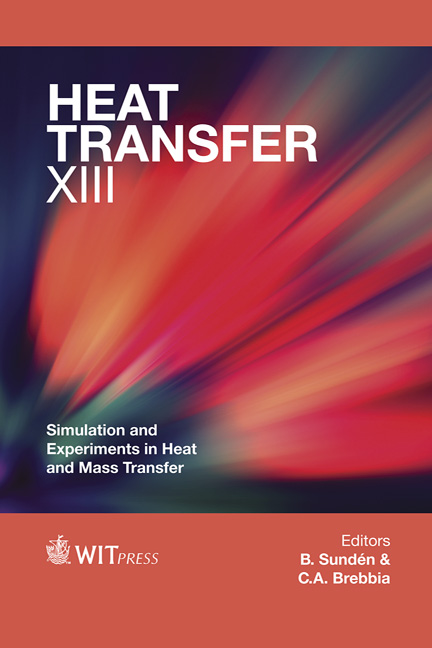An Experimental Investigation Into The Effects Of Fin Structure And Surface Type On The Efficiency Of Heat Exchangers Used For Dehumidification
Price
Free (open access)
Transaction
Volume
83
Pages
9
Page Range
123 - 131
Published
2014
Size
815 kb
Paper DOI
10.2495/HT140121
Copyright
WIT Press
Author(s)
G. Sir, Ö. Balioğlu & S. U. Onbaşıoğlu
Abstract
Household tumble dryers are classified into three major categories according to their dehumidification process. Air vented dryers are the most simple and least efficient ones, in which humid air is directly vented to the outside environment, while the condenser tumble dryers have closed air loop with an air-to-air heat exchanger for dehumidification process. Heat pump tumble dryers are the most efficient products in domestic household dryers. In the heat pump systems of these dryers, the heat released from the condenser is used directed to the laundry and evaporator is used for the dehumidification of the humid air leaving the tumble. From the design point of the view, evaporator structure and dehumidification performance have a critical role on improving the heat pump dryer efficiency. In this study, effect of fin type and fin coating of an evaporator which is used for dehumidification process in terms of condensation rate and efficiency has been studied. In order to study the effect of these parameters on dehumidification performance, temperature and air velocity at the inlet of evaporator (respectively 38°C and 1.85 m/s) has been kept constant while varying the relative humidity (65%, 70%, 80%) of inlet air, fin type (plain and wavy) and surface type (hydrophobic and hydrophilic) of evaporators. Keywords: heat pump, evaporator, hydrophobic, hydrophilic, surface coating, tumble dryer.
Keywords
heat pump, evaporator, hydrophobic, hydrophilic, surface coating, tumble dryer.





